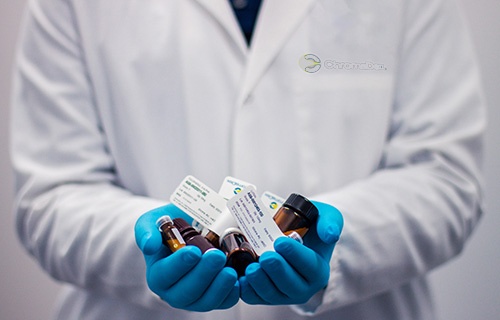A combination of biological and computational approach to study protein-protein interactions (PPIs) between the viral and the host proteins in order to identify and repurpose drugs for an effective treatment of COVID-19 and possibly other infections as well.
The usual strategies to deal with viral infections involve designing anti-viral drugs and development of vaccines. In the current unprecedented crisis, the world is facing due to COVID-19 caused by SARS-CoV-2 virus, results from both the above approaches seem quite distant to deliver any hopeful results.
A team of international researchers recently (1) have adopted a novel approach (based on how viruses interacts with the hosts) for “re-purposing” existing drugs identifying new drugs under development, that could help fight COVID-19 infection effectively. In order to understand how SARS-CoV-2 interacts with humans, the researchers used a combination of biological and computational techniques to create a “map” of human proteins that the viral proteins interact with and uses to cause infection in humans. The researchers were able to identify more than 300 human proteins that interact with the 26 viral proteins used in the study (2). The next step was to identify which of the existing drugs as well as those under development that might be “repurposed” to treat COVID-19 infection by targeting those human proteins.
The research led to the identification of two classes of drugs that could effectively treat and reduce COVID-19 disease: protein translation inhibitors including zotatifin and ternatin-4/plitidepsin, and drugs that are responsible for protein modulation of Sigma1 and Sigma 2 receptors inside the cell including progesterone, PB28, PD-144418, hydroxychloroquine, the antipsychotic drugs haloperidol and cloperazine, siramesine, an antidepressant and anti-anxiety drug, and the antihistamines clemastine and cloperastine.
Of the protein translation inhibitors, the strongest antiviral effect in vitro against COVID-19 was seen with zotatifin, which is currently in clinical trials for cancer, and ternatin-4/plitidepsin, which has been FDA-approved for the treatment of multiple myeloma.
Among the drugs that modulate Sigma1 and Sigma2 receptors, the antipsychotic haloperidol, used to treat schizophrenia, exhibited antiviral activity against SARS-CoV-2. Two potent anti-histamines, clemastine and cloperastine, also displayed antiviral activity, as did PB28. The anti-viral effect shown by PB28 was approximately 20 times greater than hydroxychloroquine. Hydroxychloroquine, on the other hand, showed that, in addition to targeting the Sigma1 and -2 receptors, also binds to a protein known as hERG, known for regulating electrical activity in the heart. These results might help explain the possible risks associated with using hydroxychloroquine and its derivatives as a potential therapy for COVID-19.
Although the above-mentioned in vitro studies have produced promising results, the ‘proof of the pudding’ will depend on how these potential drug molecules fare in clinical trials and lead to an approved treatment for COVID-19 soon. The uniqueness of the study is that it extends our knowledge on our basic understanding of how the virus interacts with the host leading to identifying human proteins interacting with viral proteins and unveiling compounds that might have otherwise not been obvious to study in a viral setting.
This information revealed from this study has not only helped scientists to identify promising drug candidates quickly for pursuing clinical trials, but can be used to understand and anticipate the effect of the treatments already happening in the clinic and can also be extended for drug discovery against other viral and non-viral diseases.
***
References:
1. The Institut Pasteur, 2020. Revealing how SARS-COV-2 hijacks Human cells; Points to drugs with potential to fight COVID-19 and a drug that aids its infectious growth. PRESS RELEASE Posted on 30 April 2020. Available online at https://www.pasteur.fr/en/research-journal/press-documents/revealing-how-sars-cov-2-hijacks-human-cells-points-drugs-potential-fight-covid-19-and-drug-aids-its Accessed on 06 May 2020.
2. Gordon, D. E. et al. 2020. A SARS-CoV-2 protein interaction map reveals targets for drug repurposing. Nature (2020). DOI: https://doi.org/10.1038/s41586-020-2286-9
***




































